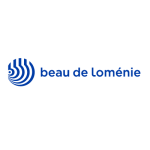On March 10 2021, the EPO’s Enlarged Board of Appeal (EBoA) issued its long-awaited decision in case G1/19 relating to the patentability at the EPO of computer-implemented simulations.
The underlying case related to the patentability of a computer-implemented simulation of the motion of people or the like through a physical environment (e.g. a railway station). In view of the fact that the simulated system was not a machine, technical process or other technical system, it seemed doubtful that this particular subject matter would meet the EPO’s strict standards for technical character, which generally comes into play during the assessment of inventive step.
Moreover, many practitioners had feared that the consideration of this case by the EBoA might lead to a negative determination in regard to the patentability of computer-implemented simulations, or computer modelling, in general. This concern was heightened by the fact that, before case G1/19 was decided, it was cited by EPO examiners as a reason for delaying examination of inventive step in many EP case files where the invention related to a computer-implemented simulation or computer modelling, even in cases where the simulated system was a technical entity.
Happily, decision G1/19 is more favourable than practitioners had feared and, in particular, there is no wholesale exclusion of computer-implemented simulations or modelling from patent protection at the EPO. The decision read “no group of computer-implemented inventions can be a priori excluded from patent protection” (point 139).
In G1/19, the EBoA has confirmed that the approach to be used for assessing inventive step of computer-implemented simulations/modelling is the same as that which is generally applied by the EPO when judging the inventive step of any computer-implemented invention. The board said “like any other computer-implemented inventions, numerical simulations may be patentable if an inventive step can be based on features contributing to the technical character of the claimed simulation method” (point 136).
The general EPO approach to assessment of inventive step of computer-implemented inventions, the Comvik approach, is based on decision T641/00. According to the Comvik approach, only claim integers that contribute to the technical character of the claimed invention can contribute to inventive step. A claim integer that is non-technical per se may, in some circumstances, be taken into account when evaluating inventive step, if in the context of the invention, it contributes “to producing a technical effect serving a technical purpose, thereby contributing to the technical character of the invention” (EPO Guidelines for Examination, Part G, Chapter VII, 5.4).
The EBoA made clear that the technical nature of the modelled/simulated system is not conclusive as to technical character. Indeed, the second question of law decided by the EBoA included an instruction that, for the assessment of inventive step: “it is not a sufficient condition that the simulation is based, in whole or in part, on technical principles underlying the simulated system or process”. Indeed, point 140 states that: “the simulation of non-technical processes may contribute to the technical character of an invention. On the other hand, it may be that the simulation of a technical system does not contribute to it.”
However, aspects of the model “may contribute to technicality if, for example:
They are a reason for adapting the computer or its functioning*; or
If they form the basis for a further technical use of the outcomes of the simulation (e.g. a use having an impact on physical reality)” (point 137).
It is inferred that the ‘adapting’ of the computer or its functioning mentioned here should involve a technical solution to a technical problem in order for the EPO to accept that there is a true contribution to technicality.
Also, the EBoA remarked that “technical improvements to simulations as such could also be achieved by particular details of the implementing software” (point 115). However, “any such implementation details concerning hardware or software would have to be disclosed in the patent application” and “In order to rely [for inventive step] on any technical improvement based on implementation details…such implementation details should appear as limiting features in the pertinent patent claims” (point 116).
Interestingly, the EBoA clarified that the legal answers they have provided in G1/19 apply even in the case of a computer-implemented simulation that is claimed as part of a design process, e.g. for verifying a design.
It follows from the EBoA decision G1/19 that it is possible to patent computer-implemented simulations and computer modelling at the EPO provided that the claimed invention includes features which contribute to solving a technical problem. The required features might be found in some real-world effect produced by the output from the modelling/simulation but it seems likely that more often the required technical character will derive from an aspect of the implementation of the simulation/modelling in software/hardware, notably some implementation detail(s) which adapt the computer or its functioning in a way that overcomes a technical problem. It is important to ensure that such implementation details, and the problems they solve, are disclosed in the specification.
For reference, here are the answers that the EBoA gave to the questions of law referred to it in G1/19:
A computer-implemented simulation of a technical system or process that is claimed as such can, for the purpose of assessing inventive step, solve a technical problem by producing a technical effect going beyond the simulation’s implementation on a computer.
For that assessment it is not a sufficient condition that the simulation is based, in whole or in part, on technical principles underlying the simulated system or process.
The answers to the first and second questions are no different if the computer-implemented simulation is claimed as part of a design process, in particular for verifying a design.
Suzanne Orian
Patent attorney, Cabinet Beau de Loménie
Nicolas Underwood
Patent attorney, Cabinet Beau de Loménie













